Aperture
American Photo
B&W Magazine
British Journal of Photography
Blind Spot
View Camera
Camera Austria
Camerawork
Colors
European Photography
LensWork
Nature Photographer
Outdoor Photography
PDN Photo District News
Photograph Guide.com
Photo Insider
Photo (French)
Photo Life
Photographie Magazine
Petersen's PHOTOgraphic
PhotoMedia
PHOTO Techniques
Picture Magazine
Popular Photography
Portfolio
Practical Photography
Professional Photographer
Shots Magazine
Shutterbug Magazine
The Photo Review
Zoom Magazine
Digital Photography Magazines
PC Photo Photography
Digital Photographer
Digital Camera
JPG Magazine
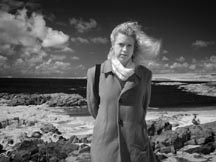
Syllabus
DAT-H102, Digital Photography, 3 cr
CRN:
3898
Friday 2:20 - 5:15 L303 Danbury Campus
Division of Arts And Humanities
Naugatuck Valley Community College
Waterbury, CT
Instructor: Jerry Nevins
email: jnevins@nv.edu, jnevins@jnevins.com
Virtual home
office hours M, Tu, Wed, Thurs 9-11pm via email and phone
Required Textbook: None. All reading provided on class website
Required Materials: Digital Camera,USB cable or SD card reader
Fall Semester, 2018
NVCC Danbury Blog, Spring 2018
NVCC Danbury Blog Fall 2017
NVCC Blog Fall 2016
NVCC Blog Fall 2014
Class Blog Mod 5, 2014
Class Blog, Spring Semester 2012
Class Blog, Summer 2012
Class
Blog, Spring 2010
Class
Blog Spring 09
______________________________________________________________________________________
Action is the foundational key to all success.
::: Pablo Picasso :::
Course Description: Introduction to the fundamentals of photography concentrating on the use of the camera as a form of expression and communication. Manual camera functions and basic image editing procedures will be covered. Photographic composition, genres and ethics will also be considered through lectures and assignments. Note: students enrolled in DAT*H102 will be responsible for purchasing a DSLR Camera or other approved camera with manual functions.
Number of Credits: 3
Prerequisites: None
Required Textbook: None
Required Materials: DSLR Digital Camera with lens
USB cable for connecting the camera to a computer (should be included with camera) and/or USB SD card reader
Appropriate media storage card for camera (should be included with camera)
8 gigabytes (minimum) Flash Drive
Notebook for class notes
Recommended: Tripod and camera bag
Optional: Laptop; Adobe Photoshop Creative Cloud. Educational versions of this program are available
Suppliers: B&H Photo
18009477785
Calumet Photographic
890 Supreme Drive
Bensenville IL 60106
888.888.9083
Freestyle Photographic Supplies
5124 Sunset Blvd.
Hollywood, CA 90027
18002926137
PhotoBerts CheatSheets
http://www.photocheatsheets.com/?n=900
Learning Outcomes: At the end of the course the student will be able to…
- Exhibit control of manual camera functions
- Demonstrate an understanding of digital file formats and management
- Demonstrate an understanding of proper exposure
- Apply digital editing skills using Photoshop
- Distinguish the formal aspects of photographic composition
- Reference multiple genres within the photographic medium
- Analyze and interpret photographs in their cultural, historical, and technical context.
- Identify and communicate in writing the ethical issues related to the creation of photographic images
- Apply appropriate documentation style in written work
- Critique photographs in terms of exposure accuracy, composition, print quality, and meaning.
- Prepare a portfolio of original photographs demonstrating all of the above.
Instructional Methodology: The course will balance lectures with hands-on demonstrations, learner-centered application assignments, and a comprehensive final project.
Expectations: You will be learning many new techniques this semester so it is critical to the success of your work, and subsequently your grade, to be in class and on time. It is expected that you will work during class time and outside of class to complete assignments. Demonstrations will take place only once. All students are encouraged to participate by voicing opinions, ideas, questions, etc.
Course Outline/Readings (subject to change):
DATE |
Discussion/Activity |
|
|
8/31/2018 |
Introductions, who I am and my qualifications; my expectations for students – The Art of the Crit; Guidance on camera purchases. Syllabus explained.
Post an image of yourself on the class blog and tell us something about yourself. Composition techniques. How we read images and the cultural basis for doing so. Using perspective to our advantage. The Golden Mean and Fibonacci Number methods. First Assignment: Introduction to Composition: The Built Environment. Assignment 1: Photograph in downtown Danbury (or your own town) using architectural and constructed elements to structure a compelling composition. Shoot 50 images for editing in class. 10 final images will be in your final portfolio. Photograph shapes, reflections, light and pattern in an urban or town environment paying particular attention to the shapes you select in the frame and the quality of light on the subject. Avoid being far away or showing a whole building. Always shoot with natural light. Never use flash in this class... get in close, fill the frame. We will learn to use line, mass, value (tone), contrast, color, and selection consciously in the creation of your images. Think in abstract, not literal terms. |
9/72018 |
|
9/14/2018 |
Assignment 2: By the Sea (streams rivers, lakes, etc.) Look at Weston's work at Point Lobos, California. What kind of light did he photograph under? How did he move in and compose with what he was looking at? For each photograph, consider the point of view Weston and the camera position. Weston got down, got close to these rock forms on the beach. I want you to do the same Read this short biography of Ansel Adams. Browse through his images of the American west. You are to visit the beach, and look carefully at form, light, composition and line. Examine tidal pools, rock formations and sand patterns with the curiosity and freshness of a young child, say a toddler. Move in close, fill the frame. Submit your best two images on the class blog and post 6-10 or more to Google Drive. (Links in academic expectations below). If you live well inland and would prefer to visit a waterfall or brook with moving water, that would work too. |
9/21/2018 |
Edit Assignment 2 in class. This week we further discuss The Trinity of ISO-SHUTTER SPEED-APERTURE how the advanced photographer uses each element consciously to achieve his or her intended objectives. In Class Assignment: Depth of field demonstration. |
9/28/2018 |
|
| 10/5/18 |
Assignment:3 Shadows and Light Consider this gallery of photographs by amateur Greek photographer, George Christakos. Notice how the photographs are about the quality of light... and shadow. Shadows take on a materiality that is just as strong as the architectural elements depicted, perhaps stronger. Use the widest focal length setting on your lens. Look for shadows as geometric form this week. Start around your home, downtown, or anywhere your travels take you. Look down, look up, fill the frame. Light reflecting directly off water can be interesting... throw in dramatic clouds...perhaps at sunset... convert to black and white... Chairs, railings, your back deck, light streaming in through windows casting shadows.... shadows made by people walking downtown... |
10/12/2018 |
|
10/19/2018 |
Crit of Water image assignment. Assignment 4:Altered scale: Large images from tiny object(s) (The macro project) Read The Photographer's Eye, John Szarkowski, Introduction to the Catalog of the Exhibition Most of your digital cameras have the wonderful ability to get really close to things and keep it in sharp focus. This is called "Macro" photography. Find out how close your camera can get and shoot everything this week from this distance. My Nikon coolpix can get to within 3/4" of the subject and keep it really sharp. Each camera is different so look it up in your manual. If you have a scanner at home, consider using it as you digital camera for the week. Scanners capture remarkable detail... better than digital cameras.... Browse through this gallery of amazing macro shots. How did the "photographer" pay attention to design and light? Discover form inside the flowers rather than just taking a picture "of" a flower... the flowers were a springboard to exploring formal elements of art and design. Expose 50 frames and bring to next class for in class editing |
10/26/2018 |
|
11/2/2018 |
|
11/16/2018 |
|
11/30/2018 |
Assignment 5: The Digital Portrait I call this assignment "How to Fry an Egg".... Everyone thinks they know how to do it but when you come right down to it, there is a lot of technique involved and there is plenty of opportunity to mess it up. Watch Video Introduction to the assignment. Pet Portrait introduction at DPreview Here's what I'd like you to do... Find someone you know, love and trust. This can be a child, spouse, best friend, parent... you get the idea. Take them by window light. Watch the light on the face, wait for an open, truthful expression and create a simple but beautiful portrait. (No flash!). Use a piece of white cardboard, a sheet or other white object to reflect light back into the shadow side of the face. Take your time... there's no rush. If your model puts up a fuss, find someone else. Can you do it? |
12/7/2018 |
. |
| 12/7/2018 | Continue editing portraits. In class crit of portraits posted to the class blog and to Google Drive portfolios. |
12/14/2018 |
|
Digital Arts Lab Policies:
- On the average, students should expect to work 3-4 hours per week, outside class meetings, on assignments for this course. The Digital Arts Technology (DAT) Lab facilities are available during Lab Hours. Please consult the Lab schedule.
- Absolutely no food or beverages are allowed at the computers in the DAT Labs.
- Students will not download and install software (of any kind), and will not alter computer configurations in any way, unless specifically given permission by the instructor.
- Students will not mishandle Lab equipment and furniture.
- No equipment or materials are to be taken from the DAT Labs without explicit permission from Professor Leite.
Any person not in full compliance with the policies stated above will lose the privilege of using the facilities of the DAT Labs.
Evaluative Criteria: The final grade for this course is made up of an average of grades from the assignments, final portfolio and the in class work component. The assignments are worth 50%, the final portfolio is worth 30% and the in class work component is worth 20%. The in class work component requires that you review at least two prints/images/ideas with me per class session so we may have a dialogue about your work and progress in this course and also cover any concerns you may have with your projects. During class sessions that we have critiques you are required to contribute to the critique in a substantive way by sharing your photographs and thoughts on the work being critiqued. Late assignments are not accepted (with the exception of extreme circumstances, illness, death in the family, etc.). All grades for this class can be found online in the Blackboard grade book.
Late Assignment Policy: All assignments are due at the start of class on the date listed unless otherwise stated. Anything handed in late will be accepted, but will lose points based on how late it is.
Make-up Policy: It is the responsibility of the learner to submit all missed work during scheduled office hours or by arranging a mutual suitable meeting with the instructor. Select pertinent information from the missed class will be accessible through the class site on Blackboard.
Important! In the Digital Arts Program a majority of learning is done in the classroom. Since all classes in this program meet once a week, one absence is equivalent to missing two classes worth of information. One absence, while not encouraged, may not affect your learning experience or grade significantly; two or more will make it difficult to successfully complete the class. After a second absence, please set up a time with me to discuss options for the class. After three absences or more, in order to avoid receiving a failing grade, it is best to withdraw from the class.
Incomplete grade:
Withdrawal Policy:
The last day for Student-Initiated withdrawal is Tuesday, November 20, 2018.
.
Part II: Resources
Grading System: For the purpose of computing numerical credit point averages, grades are evaluated as follows for each semester hour of credit. Grades on exams, papers, and quizzes, will be based on this grading system.
Numeric Grade |
Acceptable Letter Grade Range to be used by the Instructor |
Description |
90-100 |
A- to A |
Excellent |
80-89 |
B-, B, B+ |
Above Average |
70-79 |
C-, C, C+ |
Average |
60-69 |
D-, D, D+ |
Below Average |
Below 60 |
F |
Failing |
Google Drive and Google Blogger: This course makes extensive use of Google Apps for Education, the digital teaching and learning platform made available free of charge. All students will need access to the Internet (there are plenty of computing resources on campus) in order to access course resources.
During off-hours please visit our Connecticut Community Colleges Online Help Desk https://cscu.edusupportcenter.com and search “Blackboard Mobile Learn” or call 860-723-0221 available 24/7/365. If these resources are not available, please resort to using your desktop/laptop computer for all course viewing and activity. Students and Faculty can access Blackboard Learn through our myCommNet portal http://my.commnet.edu or through our Blackboard Learn App by referring to the help article entitled “Can I use Blackboard on my Smartphone or Tablet?” https://cscu.edusupportcenter.com/sims/helpcenter/common/layout/SelfhelpArticleView.seam?inst_name=cscu&article_id=1912-1463992, or directly at https://ctccs.blackboard.com.
Tutoring Resources: The Academic Center for Excellence (ACE), provides tutoring in math, sciences, English and writing, and numerous other subjects. Students can learn about the full range of tutoring and other student success services by going by the ACE in E500 Ekstrom Hall, visiting its webpage at http://www.nv.edu/Student-Life/ACE-Tutoring, or by calling (203) 596-8717. The ACE is located on both campuses, Danbury and Waterbury.
Monday & Tuesday |
8 am – 8 pm |
Wednesday & Thursday |
8 am – 7 pm |
Friday |
8 am – 4 pm |
Saturday |
10 am – 3 pm |
Sunday |
12 pm – 4 pm |
Waterbury Hours:
Danbury Campus Hours:
The Danbury campus ACE/multipurpose Room is located in D201. The Multipurpose room is open during normal operating hours. Tutoring schedules are arranged as the schedule is finalized each semester.
Library Resources: On the Waterbury Campus, The Max R. Traurig Library is located on the 4th and 5th floors of the L building. The library has books, journals, databases, research guides, DVDs and CDs to support the college curriculum, as well as copies of all the textbooks used at NVCC. Textbooks and ESL readers are available in the Multipurpose Room at the Danbury Campus. The online journal databases, ebooks, and streaming videos can be accessed via the library website at www.nv.edu/library or through the Library tab in MyCommNet.
Monday - Thursday |
8 am – 8:00 pm |
Friday |
8 am – 4:30 pm |
Saturday & Sunday |
10 am – 2:00 pm |
Waterbury Hours:
Library Circulation Desk: (203) 575-8024
Reference Desk: (203) 575-8224
Text Us! (203) 951-8189
Email: library@nv.edu
Danbury Campus Hours:
For the Danbury Campus, librarians work with faculty to schedule in-class instruction. Textbooks are available at the Multipurpose Room, D-201.
Dean of Academic Affairs: Dr. Lisa Dresdner
Kinney Hall – 719
203-575-8004
Part III: Important College Information and Policies Related to this Class
NVCC Absences and Attendance Guidelines:
- The Faculty expects that each student will exercise personal responsibility regarding class attendance.
- All students are expected to attend every class session of each course for which they are registered.
- Students are responsible for all that transpires in class whether or not they are in attendance, even if absences are the result of late registration or add/drop activity at the beginning of a term as permitted by college policy.
- The Faculty defines excessive absence or lateness as more than the equivalent of one week of class meetings during the semester. Distance Learning courses will use criteria established by the Instructor.
- When presence counts towards class participation, excessive absence or lateness may, at the discretion of the instructor, lower a student’s course grade.
- Instructors will maintain attendance records.
Class Cancellations: With the potential for faculty emergencies or inclement weather, class cancellations or delays are a possibility. If a class is cancelled or delayed, instructors may plan for a qualified substitute instructor or plan make-up assignments for any class time missed. Faculty can plan for make-up assignments through a variety of ways including, but not limited to, the use of reading days, extended class time, or online/additional class assignments. Cancellation or delay of classes due to inclement weather is made only by the President of the College. To promptly learn of these cancellations or delays, please sign-up for MyCommNetAlert for immediate notifications.
Students with Special Needs-ADA: Students who may require academic adjustments on the basis of a disability are encouraged to contact the Counselor for Students with Disabilities (Terry Latella K519C) at the Waterbury and Danbury Campuses
After providing documentation and completing the disability disclosure process, students are then encouraged to meet with their instructor(s) to discuss the adjustments approved by the appropriate disabilities contact and to complete the Adjustments Agreement form. Students are therefore encouraged to meet with the Disabilities Counselor and their instructor(s) at the beginning of each semester. Adjustments are not retroactive. Instructors, in conjunction with appropriate college personnel, will provide assistance and/or adjustments only to those students who have completed the disability disclosure and academic adjustments process.
Academic Misconduct Statement: At NVCC we expect the highest standards of academic honesty. Academic dishonesty is prohibited in accordance with the Board of Trustees’ student discipline policy 5.2.1 Policy on Student Conduct, Section 3, Paragraph 2. This policy prohibits cheating on examinations, unauthorized collaboration on assignments, unauthorized access to examinations or course materials, plagiarism, and other proscribed activities. Plagiarism is defined as the use of another’s idea(s) or phrase(s) and representing that/those idea(s) as your own, either intentionally or unintentionally.
The first offense of academic misconduct may result in a grade of “F” or “0” for the assignment and/or failure in the course at the discretion of the instructor. (Please see the Student Handbook on the College website link for more information: https://nv.edu/portals/0/documents/studentservices/studenthandbook.pdf.Any subsequent instances of academic misconduct will require the student to meet with the Dean of Academic Affairs. The Dean, in collaboration with the instructor, will determine the consequence for the subsequent instances of academic misconduct.
A student may not obtain a transcript notation of “W” in a course if there exists substantial reason to believe the student has engaged in academic misconduct in the course. A transcript notation of “W” will only be permitted for such students when the final resolution results in finding the student did not commit academic misconduct in the course.
Official Student Email: NVCC students are given an official student email address, which is the primary way to receive any communications from the college. It is students’ responsibility to check this e-mail for all communications from their instructors and the college. Emails will no longer be sent to personal email accounts; however, students can easily forward their college e-mail to their personal e-mail. Visit nv.edu/email for details on setting up an account or for help, call or visit IT: 203-575-8092 or nv.edu/IT. NVCC gives free access to web applications of Microsoft Word, Excel, PowerPoint and OneNote.
Student & Faculty Communication and Processes: Good communication between students and their instructors can make a big difference in academic experiences. If a student has a question or problem with the course or an assignment, they should always try to talk to their instructor first.
It is the College’s policy to provide a mechanism and process whereby a student may formally appeal faculty decisions. When a student uses the appeals procedure, all parties should endeavor to resolve the dispute amicably at the earliest possible stage.
A student has the right to appeal any decision of a full-time or adjunct faculty member, staff member, program director, clinical coordinator or employee of the college. An academic appeal is defined as an allegation by a student that an employee of the college has violated federal or state laws and regulations, college or department policies, accreditation standards or the faculty member’s own stated policy relating to the student’s assignment of grades or other academic evaluation. Academic Appeal Forms are available on page 36 in the Student Handbook at: https://nv.edu/portals/0/documents/studentservices/studenthandbook.pdf
Student Handbook: Please see the Student Handbook on the College website (found under Student Resources) for more information on these and other policies and procedures such as Code of Conduct Violations, cell phone use in class, Children on Campus, Smoking Policy, and more. https://nv.edu/portals/0/documents/studentservices/studenthandbook.pdf
NVCC Smoke-Free Campus Policy: Section 19a-342 of the General Statues of Connecticut prohibits smoking in any building or portion of a building owned or leased by the state. Smoking is also prohibited in any vehicles owned or leased by the state or any political subdivision thereof (this policy does not apply to personal vehicles). Smoking shall also be prohibited in all outdoor areas of Naugatuck Valley Community College campus property, including but not limited to parking lots, paths, fields, and sports/recreational areas. See page 43 of the Student Handbook.
Important Link to additional information: Please see the Student Handbook on the College website for more information on these and other policies and procedures such as Code of Conduct Violations, Cell phone use in class, Children on Campus, Smoking Policy, and more. http://www.nv.edu/Portals/0/documents/studentservices/Student%20Handbook%201-29-15%20.pdf
Continuing Notice of Nondiscrimination: Naugatuck Valley Community College does not discriminate on the basis of race, color, religious creed, age, sex, national origin, marital status, ancestry, present or past history of mental disorder, learning disability or physical disability, sexual orientation, gender identity and expression or genetic information in its programs and activities. In addition, the College does not discriminate in employment on the additional basis of veteran status or criminal record.
The following individual has been designated to handle nondiscrimination policies regarding disability policies: Robert Divjak, Director of Facilities/Section 504/ADA Coordinator, Room C216, Naugatuck Valley Community College, 750 Chase Parkway, Waterbury, CT 06708; 203-575-8235. The following individual has been designated to handle nondiscrimination policies regarding sex discrimination as well as other forms of prohibited discrimination: Jacquie Swanson, Associate Director of Human Resources/Title IX Coordinator, Room K704, Naugatuck Valley Community College, 750 Chase Parkway, Waterbury, CT 06708; 203-575-8043.
Academic Expectations:
Post at least once a week to the class blog. Care about the quality as well
as quantity of your creative work, help and collaborate with others in the
class, communicate openly with me…. Do your best. Your portfolio posted to
Google Drive portfolio will be the tangible evidence of your progress
in the medium but your overall contributions will play a role in determining
your grade as well. Go shooting each week, post each week. You may keep working on earlier assignments until
the end. You may replace earlier work with newer work you like better. Your
final grade is based on "The Big Picture", that is, how well you
have tried to understand the assignment and worked to create pieces reflecting
the spirit of the task at hand, your progress in the medium, your contributions
through posting comments on other's work on the class blog as well as oin your Google Drive. Effort counts!
Attendance is the single most important factor in earning a good grade in this class.
Technical Requirements:
-A digital camera with usb cable to connect to computer usb port or a card reader, connected to your usb port (preferred).
-Know how to install software, create online accounts, upload text and images, and how to save your work into folders on your computer and how to locate and browse to those folders to retrieve it.
Tradition of Respect: In our class: 1) Everyone is allowed to feel they can work and learn in a safe and caring environment; 2) Everyone learns about, understands, appreciates, and respects varied races, classes, genders, physical and mental abilities, and sexualities; 3) Everyone matters; 4) All individuals are to be respected and treated with dignity and civility; and 5) Everyone shares the responsibility for making our class, and the college, a positive and better place to live, work, and learn.
Suggested reading:
Photography And The Art Of Seeing: A Visual Perception Workshop For Film And Digital Photography (Paperback) by Freeman Patterson "On those frosty mornings when I grab my camera and tripod, and head out into the meadow behind my house, I quickly forgot about me..."
Photographing
The World Around You: A Visual Design Workshop For Film And Digital Photography
(Paperback) by Freeman Patterson "This book about observing and photographing
the world around you is a gift to you from my students - hundreds and hundreds
of photographers who..."
Learning
to See Creatively: Design, Color & Composition in Photography (Updated
Edition) (Paperback) by Bryan Peterson "The human eye sees in much the same
way as a 50mm lens, and therefore, the 50mm focal length lens is appropriately
called a normal..."
Photographic
Composition (Paperback) by Tom Grill, Mark Scanlon "Behind every photograph
is an idea..."
Numerous Web resources in the form of technical instruction, Youtube videos, artists websites, galleries and museums as well as journals linked from the syllabus and as discussed in class.
Fall 2018 - Academic Calendar
- Tuesday, August 28-Fall 2018 Classes Begin
- Monday, September 3-Labor Day-No Classes-CLOSED
- Tuesday, September 4- Last Day for Add/Swap
- Monday, September 10-Last day 50% Refund
- Tuesday, September 11-Late Start Classes Begin
- Wednesday, September 12-Last Day to Add/Swap Late Start Class
- Monday, October 8-Columbus Day-OPEN Classes in Session
- Monday, October 15-Midterm Grades Due
- Tuesday, October 16-Reading/Make-Up Day (Faculty Discretion)
- Monday, November 12-Veterans Day-OPEN Classes in Session
- Tuesday, November 20-Last Day for Student Initiated Withdrawal
- Wednesday, November 21-OPEN-No Classes
- Thursday, November 22-Thanksgiving Day-No Classes-CLOSED
- November 22-25-Thanksgiving Recess-No Classes-Limited Services
- Sunday, December 9-Last Day of Classes
- December 10-16 Final Exam Period
- Monday, December 17-Final Exam Make-Up Day
- Wednesday, December 19-Final Grades Due 9 a.m.
- Tuesday, December 25-Christmas-CLOSED
New Dimensions Student, Skye Cornell on the North Atlantic Coast, near Roundstone, Ireland. Irish Journal course, May,2000.
Digital
infrared quadtone print.
Jerome Nevins

Cole Weston print
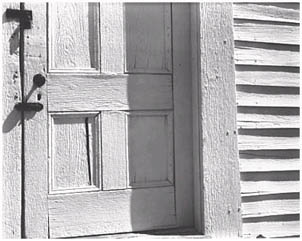
Edward Weston negative, Cole Weston print
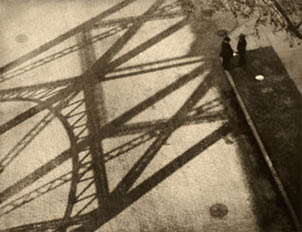
6.75 x 8.5 inch photogravure
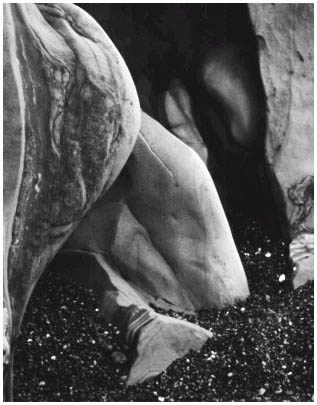
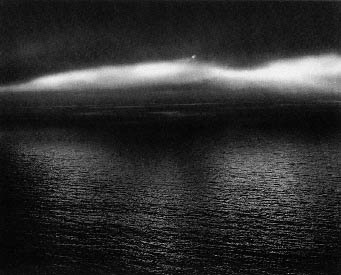
Princeton University
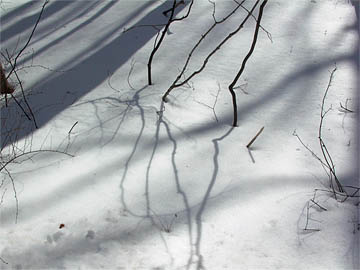
Ultra Chrome Print 11"X14"
Winter, 2005
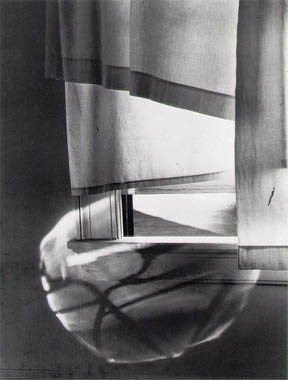

16 x 20 Chromogenic Print, 2005
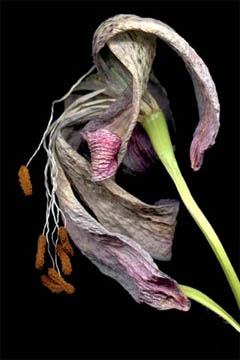
Grey Lilly #1
Diane Vetere, Toronto, Canada

Raul, school assignment...(not from me, jn)
"For my photo class I had to shoot a series of portraits
by a window using the natural light from outside. Also, I had to use a reflector
(in my case, poster board) to bounce some light onto the face. Here are the
results."